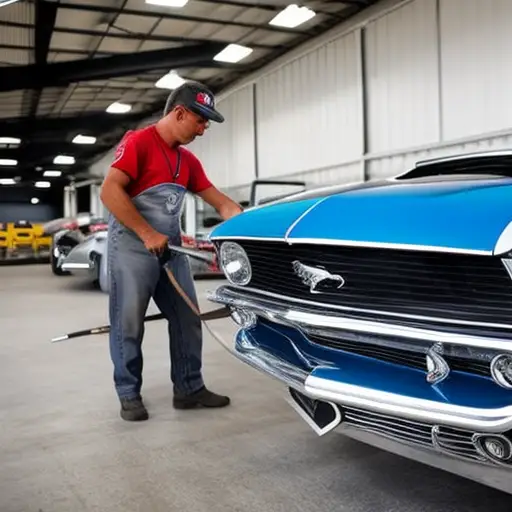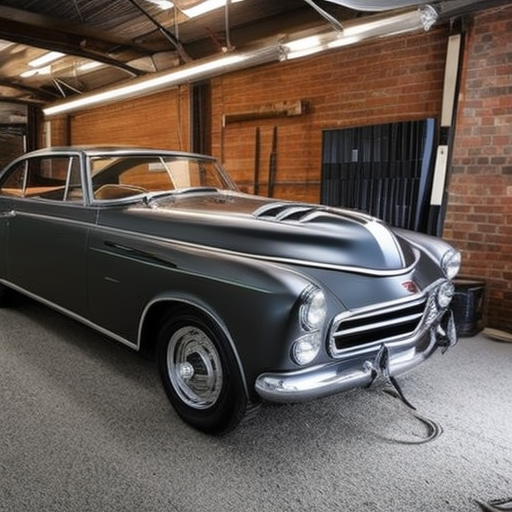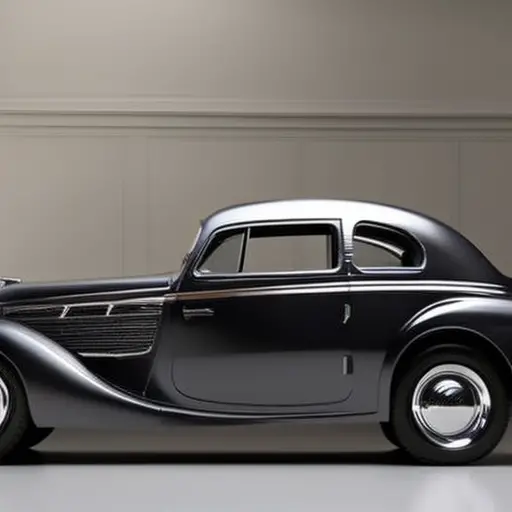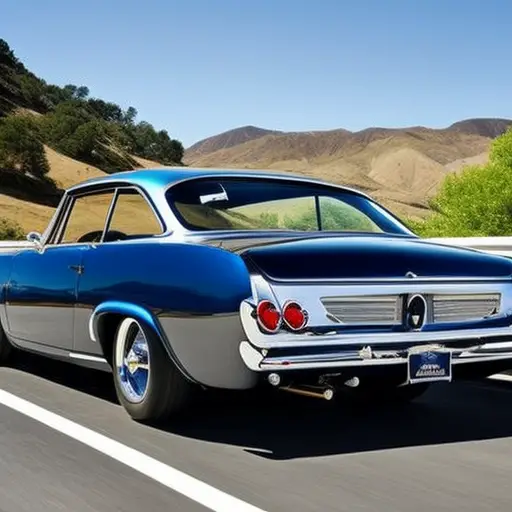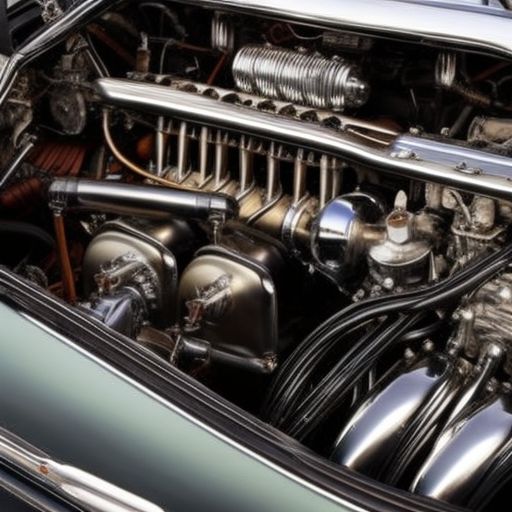The History of Porsche 911 Restoration
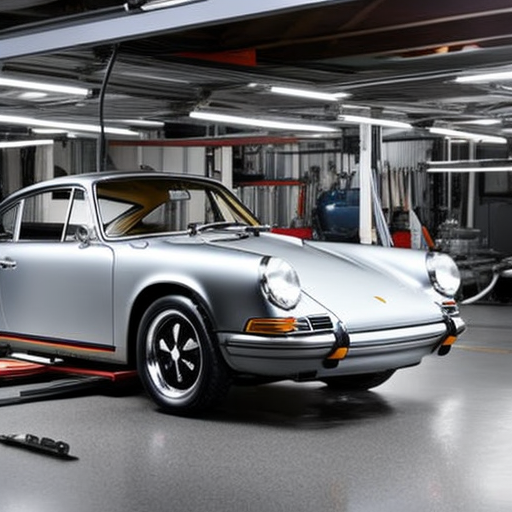
Coinciding with the resurgence of vintage car culture, the history of Porsche 911 restoration reflects a rich tapestry of innovation and passion.
From the early years of restoration to the evolving techniques and the dedicated enthusiasts driving preservation efforts, this article delves into the captivating journey of reviving these iconic sports cars.
Embracing the past while looking towards the future, the restoration of Porsche 911s continues to captivate enthusiasts and collectors alike.
The Early Years of Porsche 911 Restoration
During the early years of Porsche 911 restoration, enthusiasts and professionals alike began to recognize the historical and cultural significance of preserving these iconic sports cars.
The restoration of Porsche 911s during this period posed unique challenges due to the limited availability of original parts and the lack of specialized knowledge and techniques. Early restoration efforts often involved improvised solutions and adaptations, as dedicated restoration guidelines and resources were scarce. Restorers relied on early techniques such as hand-forming metal panels and sourcing parts from salvaged vehicles or alternative sources, often requiring extensive modification to fit the original specifications.
The limited documentation and technical information further complicated the restoration process, requiring meticulous research and reverse engineering. Additionally, the aging of the vehicles presented challenges in addressing rust, corrosion, and structural integrity issues.
Despite these obstacles, the passion for preserving the legacy of Porsche 911s drove enthusiasts and professionals to develop innovative restoration methods and techniques, laying the foundation for the high standards and specialized expertise that define Porsche 911 restoration today.
The Rise of Vintage Car Restoration Culture
The 911 restoration culture experienced a significant evolution as the demand for vintage car restoration grew, marking a notable shift in the approach to preserving and refurbishing these iconic vehicles. The rise of vintage car restoration culture has had a profound cultural impact, evoking a sense of nostalgia, craftsmanship, and appreciation for automotive history.
Nostalgia: Restoring vintage cars taps into the nostalgia of bygone eras, reminding enthusiasts of a time when automobiles were not just modes of transport but also symbols of freedom and individuality.
Craftsmanship: Vintage car restoration celebrates the artistry and skill of the craftsmen who originally built these vehicles, fostering an appreciation for traditional techniques and attention to detail.
Automotive History: Restoring vintage cars preserves and honors automotive history, allowing enthusiasts to connect with the evolution of design, engineering, and innovation in the automotive industry.
The rise of vintage car restoration culture has not only revitalized interest in classic automobiles but has also contributed to a deeper understanding and admiration for the cultural significance of these timeless vehicles.
Innovations in Porsche 911 Restoration Techniques
In response to the growing demand for precision and authenticity, innovations in Porsche 911 restoration techniques have emerged, integrating advanced technology with traditional craftsmanship to achieve unparalleled levels of accuracy and quality. Advanced technology, such as 3D scanning and printing, is now being utilized to replicate intricate original parts with precision, ensuring that restored vehicles maintain their historical integrity. Moreover, sustainability practices are being integrated into the restoration process, with a focus on using eco-friendly materials and implementing energy-efficient methods. This not only aligns with the modern ethos of environmental responsibility but also ensures that the restoration process is in harmony with the original manufacturing principles of the vehicles. To provide a deeper understanding of these innovative techniques, the table below showcases the key advancements in Porsche 911 restoration:
| Innovations | Description | Benefits |
|---|---|---|
| 3D Scanning | Precise replication of original parts | Maintains historical integrity |
| Eco-friendly materials | Sustainable restoration practices | Environmental responsibility |
| Energy-efficient methods | Reduced carbon footprint | Alignment with original manufacturing principles |
These advancements highlight the commitment to preserving the heritage of Porsche 911 while embracing modern advancements and sustainable practices. As enthusiasts and industry professionals continue to invest in these innovative techniques, the restoration landscape is evolving to achieve new heights of authenticity and quality. This shift underscores the pivotal role of enthusiasts in preservation efforts.
The Role of Enthusiasts in Preservation Efforts
Enthusiasts play a pivotal role in the preservation efforts of Porsche 911 restoration, contributing expertise and passion to uphold the heritage of these iconic vehicles. Their involvement is crucial in overcoming preservation challenges and ensuring that the legacy of the Porsche 911 continues to thrive.
-
Emotional Connection: Enthusiasts have a deep emotional connection to the Porsche 911, often stemming from childhood memories, personal experiences, or a profound appreciation for its design and engineering.
-
Heritage Preservation: Their dedication to preserving the originality and authenticity of Porsche 911 models ensures that future generations can experience these vehicles as they were intended to be.
-
Community Support: Enthusiasts foster a strong sense of community, sharing knowledge, resources, and experiences, which not only sustains the restoration efforts but also cultivates a lasting legacy for these automobiles.
Enthusiasts’ unwavering commitment to the Porsche 911 restoration has been instrumental in overcoming preservation challenges, and their passion continues to be a driving force in upholding the legacy of these iconic vehicles. As enthusiasts remain steadfast in their efforts, the future of Porsche 911 restoration is poised for continual growth and innovation.
The Future of Porsche 911 Restoration
Significant advancements in technology and methodologies will shape the future of Porsche 911 restoration. Technological advancements, such as 3D printing and advanced composite materials, will revolutionize the way vintage Porsche 911s are restored.
3D printing will enable the production of rare or discontinued parts, making restoration efforts more efficient and cost-effective. Advanced composite materials will offer improved durability and lighter weight, addressing preservation challenges and enhancing the performance of restored vehicles.
Sustainability will also play a pivotal role in the future of Porsche 911 restoration. With a growing focus on environmental impact, the restoration process will likely incorporate more sustainable practices. This could involve the use of eco-friendly materials, energy-efficient processes, and a reduction in waste generation, aligning with global sustainability goals.
Market trends will continue to influence the future of Porsche 911 restoration. As the vintage car market evolves, the demand for restored Porsche 911s is expected to grow. This will drive innovation in restoration techniques and technologies to meet the increasing demand while maintaining the authenticity and historical significance of these iconic vehicles.
Frequently Asked Questions
What Are the Most Common Challenges Faced During the Restoration Process of a Porsche 911?
During the restoration process of a Porsche 911, common challenges include sourcing authentic parts, addressing corrosion, and ensuring originality. Solutions involve meticulous research, collaboration with experts, and employing advanced restoration techniques to preserve the vehicle’s authenticity.
How Do Restoration Experts Source Rare and Discontinued Parts for Vintage Porsche 911 Models?
Restoration experts face sourcing challenges for vintage Porsche 911 models due to discontinued parts. Techniques include preservation education and future technology advancements. These efforts uphold the historical significance of the vehicle while ensuring its authenticity.
What Are Some Lesser-Known Restoration Techniques or Methods Used in the Preservation of Porsche 911 Vehicles?
In the preservation of Porsche 911 vehicles, lesser-known restoration techniques include innovative rust removal methods and meticulous paint correction processes. These techniques, often requiring specialized expertise, contribute significantly to the vehicle’s overall preservation and restoration.
Are There Any Specific Preservation Efforts or Initiatives Aimed at Educating Future Generations About the Historical Significance of the Porsche 911?
Preservation efforts and educational initiatives play a crucial role in conveying the historical significance of the Porsche 911 to future generations. These initiatives aim to instill an appreciation for the iconic vehicle’s legacy and cultural impact.
What Are Some Potential Advancements or Developments in Restoration Technology That Could Impact the Future of Porsche 911 Restoration?
Advancements in restoration technology, such as 3D printing and electric conversion, hold potential to revolutionize the future of Porsche 911 restoration. These developments may enhance efficiency, precision, and sustainability in preserving historical automotive masterpieces.
Conclusion
In conclusion, the history of Porsche 911 restoration reveals the evolution of techniques and the influence of enthusiasts in preservation efforts.
The rise of vintage car restoration culture has led to innovations in restoration techniques, ensuring the continued preservation of these classic vehicles.
As enthusiasts continue to play a vital role in restoration efforts, the future of Porsche 911 restoration looks promising, with ongoing advancements and a strong community dedicated to the preservation of these iconic cars.

